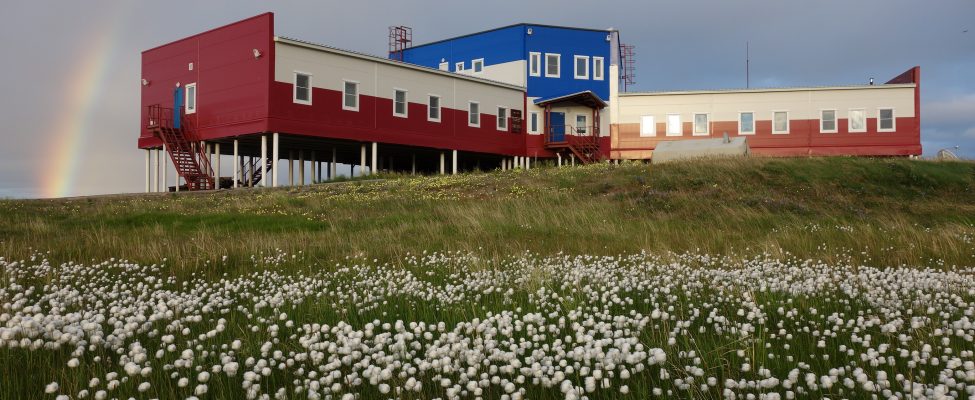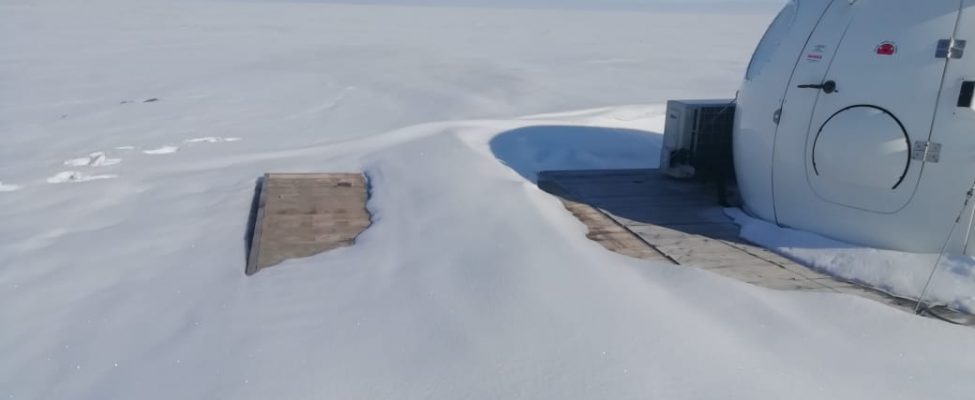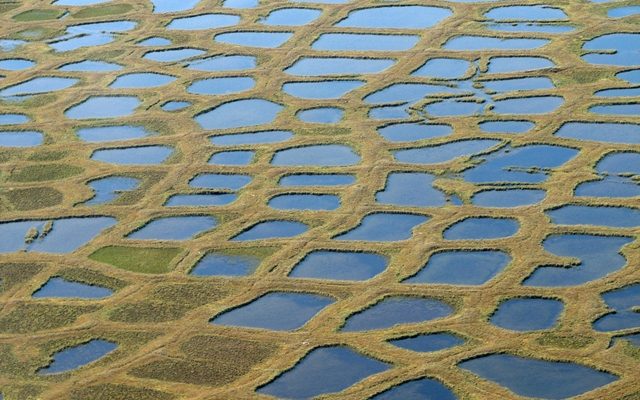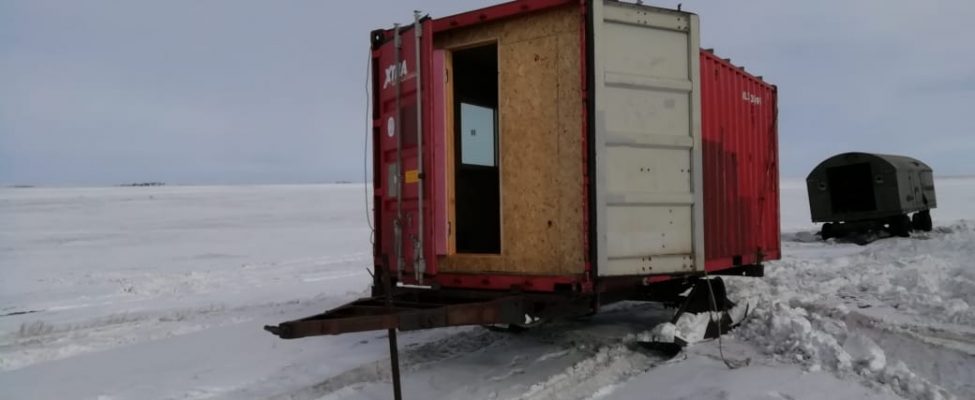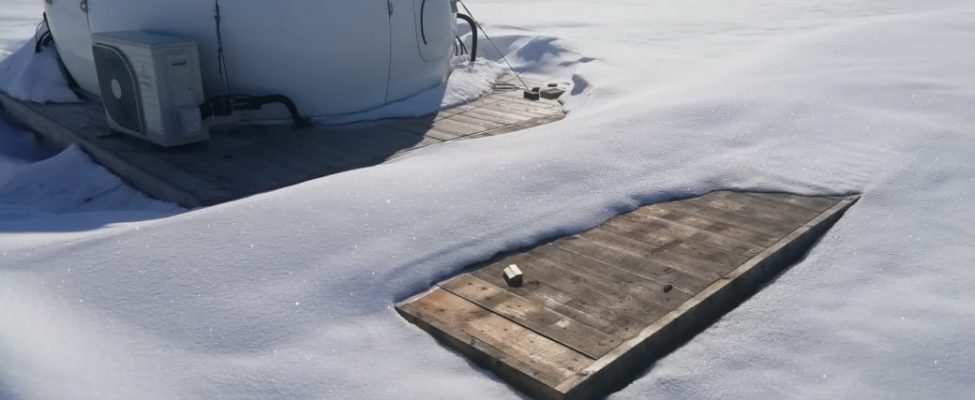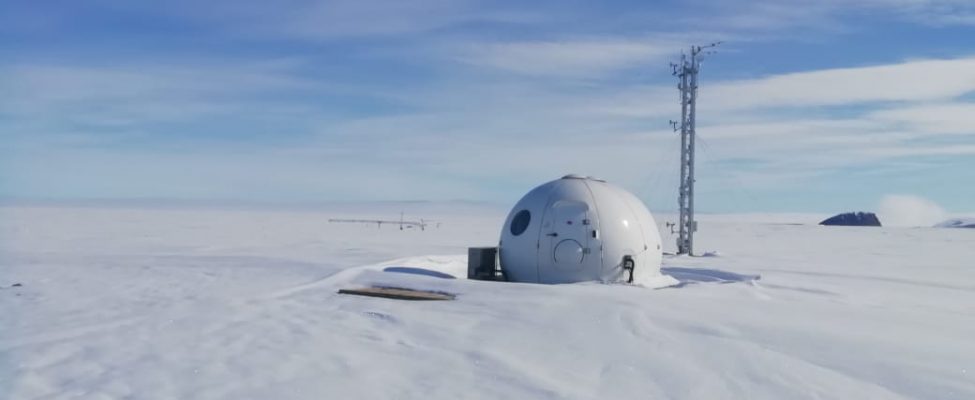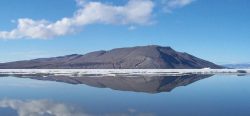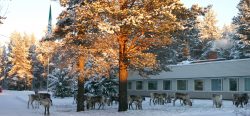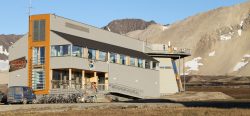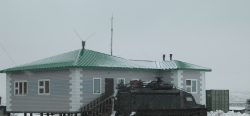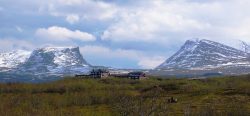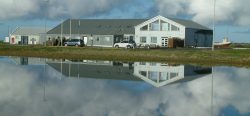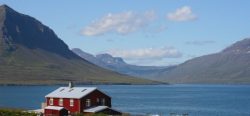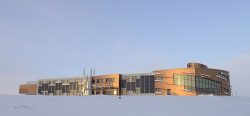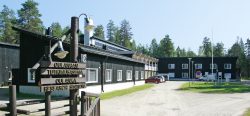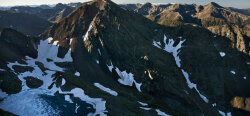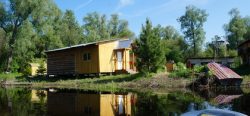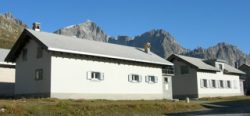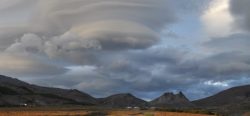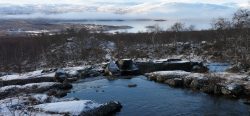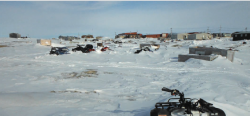Contact Details
Alfred Wegener Institute Helmholtz Centre for Polar and Marine Research
Research Unit Potsdam
Telegrafenberg A45
14473 Potsdam
Collaborator in the project until spring 2022
STATION NAME AND OWNER
The Research Station Samoylov Island is owned and run by the Trofimuk Institute of Petroleum GeologyThe study of the solid Earth, rocks and processes by which rocks form. 'Geo' is derived from the Greek word for Earth.... More and Geophysics, Siberian Branch of the Russian Academy of Sciences. Access of international research teams to the station has been coordinated by the Alfred Wegener Institute Helmholtz Centre for Polar and Marine Research (Germany).
LOCATION
The Research Station Samoylov Island is located at the southern coast of Samoylov Island in the southern part of the Lena River Delta, Northeast Siberia, close to the Laptev Sea (72°22’ N, 126°29’ E). The Lena River Delta is the largest delta system in the ArcticDefinitions of the Arctic vary according to environmental, geographical, political, cultural and scientific perspectives. Some scientists define the Arctic as areas having a high latitude, long winters, short, cool summers,... More and Samoylov Island is part of the Lena Delta Reserve, the largest protected area in Russia. The nearest settlement is Tiksi, located about 115 km to the South-East, and home to c. 5000 inhabitants.
BIODIVERSITY AND NATURAL ENVIRONMENT
Samoylov Island is situated in the youngest (Holocene) part of the Lena Delta in the zone of continuous permafrostPermafrost is frozen ground that remains at or below zero degrees Celsius (32 degrees Fahrenheit) for two or more years. It forms in regions where the mean annual temperature is... More. It covers an area of about 5 km2 and is dominated by wet polygonal tundraA type of ecosystem in which tree growth is limited by low temperatures. The origin of the word is from from the Kildin Sami word t?ndâr, meaning "uplands" or "treeless mountain tract". In the northern... More, characterised by low-centered ice-wedge polygons. The regional arctic-continental climateThe average weather we would expect over a long period of time (seasons, years, decades). Climate varies from place-to-place across the Earth. Climate is determined by long-term (over at least... More allows maximum thaw depths of about 0.5 m. Grasses (Arctophyla fulva, Dupontia fisherii), hydrophytic sedges such as Carex concolor, Carex chordorrhiza, and Carex rariflora, as well as mosses (e.g. Drepanocladus revolvens, Meesia triquetra, and Aulacomnium palustre) dominate the vegetation in the wet polygon centers and on their edges. Mesophytic dwarf shrubs such as Dryas punctata and Salix reptans, forbs (Saxifraga hirculis), and mosses (Hylocomium splendens, Tomentypnum nitens, Aulacomnium turgidum) dominate the polygon rims.
HISTORY AND FACILITIES
The old wooden station was originally built as a logistics base for the Lena Delta Reserve. After its extension in 2005, it became an official Russian-German research station (in 2006), owned and run by the Lena Delta Reserve (Russia) and the Alfred Wegener Institute. In 2013, a new large modern Russian station, owned and run by the Trofimuk Institute of Petroleum GeologyThe study of the solid Earth, rocks and processes by which rocks form. 'Geo' is derived from the Greek word for Earth.... More and Geophysics, was officially opened and has been working year-round. The old wooden station is still used during the busiest field seasons in summer for additional accommodation and working space. The new station can accommodate up to 25 people. The station building consists of three wings, which include the living areas, scientific laboratories equipped with numerous high-precision instruments, and workshop and storage facilities. The central part includes kitchen and dining room, conference hall, and recreation areas.
GENERAL RESEARCH AND DATABASES
The field work on Samoylov Island and the Lena Delta aims at studying the evolution of the region’s geologyThe study of the solid Earth, rocks and processes by which rocks form. 'Geo' is derived from the Greek word for Earth.... More, climateThe average weather we would expect over a long period of time (seasons, years, decades). Climate varies from place-to-place across the Earth. Climate is determined by long-term (over at least... More, hydrologyThe study of water in the environment, particularly its amount, movement and quality. It encompasses water in rivers, lakes, glaciers, soil and underground aquifers. The way in which water (liquid and... More, geomorphology, and biologyThe study of life and living organisms (from the Greek word 'bios' meaning life).... More with a special focus on the interaction of the permafrostPermafrost is frozen ground that remains at or below zero degrees Celsius (32 degrees Fahrenheit) for two or more years. It forms in regions where the mean annual temperature is... More ecosystems with recent climateThe average weather we would expect over a long period of time (seasons, years, decades). Climate varies from place-to-place across the Earth. Climate is determined by long-term (over at least... More warming and its consequences. Several long-term measurement sites for the monitoring of permafrostPermafrost is frozen ground that remains at or below zero degrees Celsius (32 degrees Fahrenheit) for two or more years. It forms in regions where the mean annual temperature is... More conditions, micrometeorology, trace gas exchange, and biologyThe study of life and living organisms (from the Greek word 'bios' meaning life).... More are installed on the island and have been providing important data for the expeditions and the research community as a whole since 1998. For more information see Boike, J. et al. 2013: Biogeosciences 10, 2105-2128, https://doi.org/10.5194/bg-10-2105-2013 and Boike, J. et al. 2019 Earth System Science Data, 11, 261–299, https://doi.org/10.5194/essd-11-261-2019. Data and results from Samoylov can be found in the PANGAEA database (www.pangaea.de).
HUMAN DIMENSION
The human influence on the Lena Delta is minimal due to its status as a nature reserve. There is some subsistence fishing and hunting by indigenousBelonging to a certain place. Indigenous people are distinct ethnic groups that have historic connections to people who lived in a territory prior to the area being colonized or coming... More people and occasionally river ships pass by.
ACCESS
The Research Station Samoylov Island can be reached from Tiksi (connected by regular air service to Yakutsk) by helicopter in about 45 minutes and by river boat in about 12 hours. Winter transport is possible by truck or all-terrain vehicle on the ice of the Lena River.
